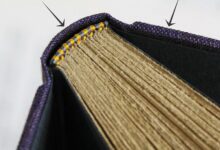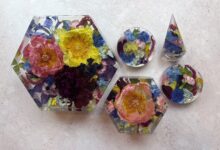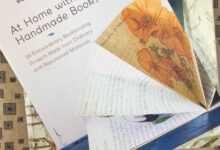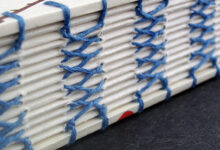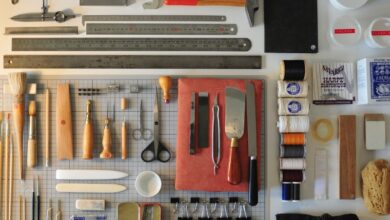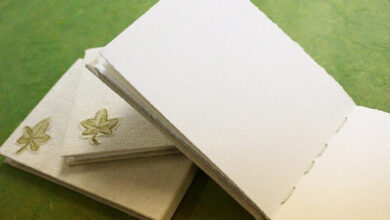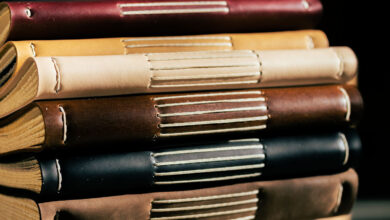The History of Bookbinding: From Ancient Scrolls to Modern Hardcover
Hello readers,
Contents
- 1 Introduction
- 2 Frequently Asked Questions
- 2.1 1. What materials were used for ancient scrolls?
- 2.2 2. How were scrolls protected?
- 2.3 3. When did the codex format become popular?
- 2.4 4. What are illuminated manuscripts?
- 2.5 5. What materials were used for medieval bindings?
- 2.6 6. How did the Industrial Revolution impact bookbinding?
- 2.7 7. How are modern hardcover books produced?
- 3 Conclusion
Introduction
Throughout history, the art of bookbinding has played a crucial role in preserving and protecting valuable texts. From the earliest form of bookbinding seen in ancient scrolls to the more modern and sturdy hardcover books we use today, this article dives into the fascinating journey of bookbinding techniques and materials.
In this comprehensive guide, we will explore the various methods employed by different civilizations, the strengths and weaknesses of each technique, and how bookbinding has evolved over time.
Ancient Egyptian Scrolls: The Origins
The art of bookbinding traces its roots back to ancient Egypt, where the concept of long scrolls made from papyrus was first developed. These scrolls were often adorned with intricate hand-painted illustrations and held together with wooden or metal rods at the ends.
Ancient Egyptians revolutionized the idea of written records by consolidating multiple scrolls into one cohesive unit, creating an early precursor to the modern book. While scrolls were convenient for long texts, they lacked the practicality and ease of use.
The Codex: A Turning Point
The codex, a precursor to today’s books, emerged in the Eastern Roman Empire around the 1st century AD. This revolutionary format involved folding pieces of parchment or vellum in half, stitching them together, and protecting them with wooden covers.
The codex offered several advantages over scrolls. It allowed for faster access to specific information, better preservation, and easier storage. This format gained popularity and eventually replaced scrolls as the primary means of bookbinding.
Medieval European Era: Illuminated Manuscripts
During the medieval era, bookbinding in Europe took on a new level of artistic expression with illuminated manuscripts. Skilled scribes and artists painstakingly decorated these manuscripts with elaborate illustrations and intricate calligraphy.
The bookbinding techniques used during this time involved sewing parchment or vellum pages together with linen thread and attaching wooden boards covered in leather or fabric. Metal clasps and ornamental decorations were added for both functional and aesthetic purposes.
Industrial Revolution and the Birth of Hardcover
The Industrial Revolution marked a significant turning point in bookbinding history, leading to mass production and the birth of the modern hardcover book. The advent of new machinery allowed for more efficient binding processes and the use of durable, cost-effective materials.
Hardcover books soon became the preferred choice for publishers and readers alike due to their durability and aesthetic appeal. Modern bookbinding techniques involve sewing gatherings of printed pages together, attaching them to reinforced book spines, and covering them with sturdy bookcloth or leather covers.
The Strengths of Modern Hardcover
| Strengths | Explanation |
|---|---|
| Durability | Modern hardcover books are designed to withstand frequent use and sustain minimal damage. |
| Aesthetic Appeal | Hardcover books add an element of elegance and sophistication to any library or book collection. |
| Protection | The sturdy covers and spines of hardcover books provide better protection to the pages inside. |
| Longevity | When properly cared for, hardcover books can last for generations and become cherished heirlooms. |
The Weaknesses of Modern Hardcover
| Weaknesses | Explanation |
|---|---|
| Weight | Hardcover books tend to be heavier and bulkier, making them less portable and convenient for travel. |
| Cost | The production of hardcover books generally involves higher expenses, resulting in slightly higher retail prices. |
| Binding Damage | If mishandled or stored in unfavorable conditions, the binding of hardcover books can deteriorate over time. |
| Less Flexibility | Hardcover books are less flexible than paperbacks, making it harder to comfortably hold them open with one hand. |
Frequently Asked Questions
1. What materials were used for ancient scrolls?
Ancient scrolls were typically made from papyrus, an early form of paper. The Egyptians cultivated papyrus plants, extracted the inner pith, and created thin strips that were laid parallel to each other and pressed together, forming a continuous sheet.
2. How were scrolls protected?
Scrolls were protected by wooden or metal rods attached to each end. These rods prevented the scrolls from unravelling and provided stability while reading.
3. When did the codex format become popular?
The codex format gained popularity around the 1st century AD in the Eastern Roman Empire and gradually replaced scrolls due to its practicality and ease of use.
4. What are illuminated manuscripts?
Illuminated manuscripts are handcrafted books from the medieval era that feature intricate illustrations, decorative elements, and illuminated initials. These manuscripts were often created by skilled scribes and artists in monasteries.
5. What materials were used for medieval bindings?
Medieval bookbindings were typically crafted using wooden boards covered in leather or fabric. Parchment or vellum pages were sewn together using linen thread.
6. How did the Industrial Revolution impact bookbinding?
The Industrial Revolution led to the mechanization of bookbinding, allowing for faster production and the use of more affordable materials, such as bookcloth. This revolutionized the industry and made books more accessible to the general population.
7. How are modern hardcover books produced?
Modern hardcover books are produced by printing and binding the pages, sewing them together into gatherings, attaching the gatherings to reinforced spines, and covering them with bookcloth or leather.
Conclusion
In conclusion, the history of bookbinding showcases the ingenuity and creativity of different civilizations throughout time. From the ancient Egyptian scrolls to the modern hardcover books, each era contributed its unique techniques and materials.
While modern hardcover books offer durability and aesthetic appeal, they also come with certain limitations, such as weight and cost. Regardless, they remain cherished possessions and symbols of knowledge.
If you have ever wondered about the evolution of bookbinding or admired the beauty of a hardcover book, take a moment to appreciate the centuries of craftsmanship that went into preserving and presenting the written word.
Now, go forth and explore the vast realm of literature, appreciating both the content and the exquisite art of bookbinding behind every cover.
Disclaimer: The information presented in this article is for educational purposes only and does not constitute professional advice. Consult with a qualified expert for specific bookbinding or historical inquiries.
Originally posted 2023-09-10 13:28:52.

